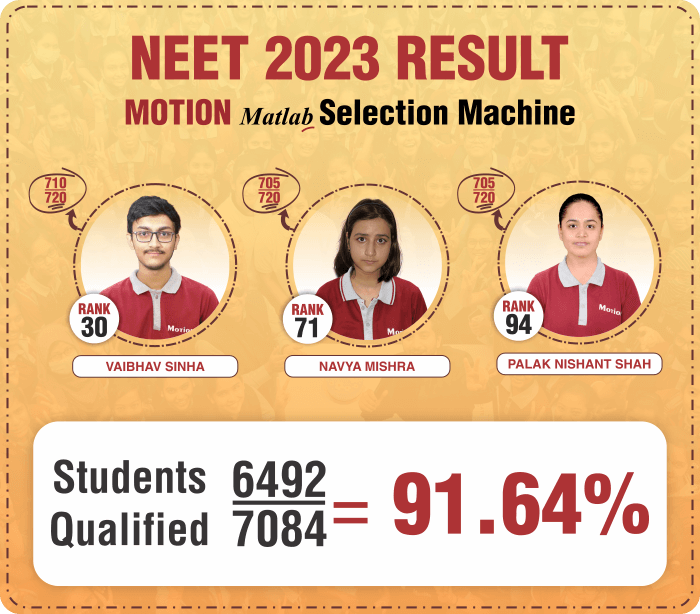
How To Calculate JEE Main 2024 Rank From Percentile Score: Prospective JEE Main 2024 candidates can utilize the article below to estimate their JEE Main rank calculation 2024 based on their percentile score.
Many candidates are eager to understand the process of calculating their JEE Main 2024 rank based on their percentile score. This desire stems from the need to anticipate their rank before the official release of the JEE results. As the National Testing Agency (NTA) provides JEE Main scores in percentile form, students are curious about how these percentiles translate into their final rank. It’s essential to note that the JEE Main rank is determined by considering the percentile scores from both sessions of the NTA JEE Mains.
Now, why would students be interested in estimating their JEE Main 2024 rank based on the NTA percentile score? The motivations are diverse and numerous. Some students might not have taken the JEE Main exam in April, while others might be trying to gauge whether achieving a higher score could secure them a better seat or college.
In this article, we’ll delve into the method of calculating the JEE Main 2024 rank using the percentile score, addressing the curiosity and concerns of candidates in understanding their potential ranking outcome.
The National Testing Agency (NTA) has clarified that normalization will occur on a session-by-session basis. This means that the percentile score you receive will be relative to the performance of others within your specific session. Your percentile score indicates the percentage of candidates who achieved equal to or lower raw scores compared to yours in that particular examination session.
For instance, the top 9 scorers, who achieved a perfect NTA score of 100, will each have a percentile score of 100 after normalization, reflecting their exceptional performance within their respective sessions. Additionally, scores obtained between the highest and lowest marks are also converted into appropriate percentiles.
It’s important to note that while there’s a formula provided for calculating percentiles in JEE Main, it serves as a guideline and may not precisely predict your actual rank. Actual ranks can vary due to various factors.
Read Also:
- Got 96 Percentile in JEE Main 2024, which college & branch you may get?
- Got 98 Percentile in JEE Main 2024, which college & branch you may get?
- JEE Main 2024 Marks vs Percentile vs Ranks
- JEE Main Previous Year Question Paper
- What is a Good NTA Score in JEE Main 2024?
How To Calculate JEE Main 2024 Rank From Percentile Score?
The JEE Main 2024 exam is yet to take (take with a grain of salt idiom synonym) place, but it’s crucial to understand how to calculate your rank from percentile scores, using insights from previous years. Let’s begin with an example from the January session of JEE Main 2023. According to NTA statistics from the previous year, a total of 823,967 students appeared for the January session. NTA reported that 20 students achieved a perfect 100 percentile score, thereby becoming JEE Main Toppers.
To estimate your JEE Main 2023 rank, you need to determine the percentage of candidates ahead of you with higher percentile scores. This calculation involves subtracting your percentile score from 100, which represents the highest score achievable.
Given that percentiles range from 100 to 0 for each session, the formula incorporates the total number of students in the January session (822,000) divided by 100, multiplied by the percentage of students scoring higher than you to derive at the rank.
Thus, the formula to calculate the probable JEE Main 2023 rank using the percentile for the January session is as follows:
JEE Main 2023 rank (probable) = (100 – NTA percentile score) × 823,967 / 100
For instance, if your NTA percentile score is 90.70, your JEE Main rank would be (100 – 90.70) × 823,967 / 100 = 76,628. Similarly, if the percentile score is 80.60, the rank would be (100 – 80.60) × 823,967 / 100, resulting in a rank of 159,849.
However, it’s important to note that this formula does not apply to those achieving a 100 percentile score, as they are already among the top ranks.
To determine whether to appear for the April session of JEE Main 2024, one can use a hypothetical calculation of percentile scores. By estimating the number of candidates likely to appear in April (historically between 9 to 10 lakhs), individuals can gauge their potential rank using the NTA score.
The reason we consider the January NTA score is that the better of the two scores will be considered. So even if performance in April is subpar, the January NTA score remains valid, while an improved performance in April would reflect a better rank.
To predict the April JEE Main 2024 rank from the NTA percentile score of January, the same formula is applied:
For example, with an NTA percentile score of 90.70, the April JEE Main rank would be (100 – 90.70) × 1,000,000 / 100 = 93,000. This indicates a good chance of qualifying for JEE Advanced, considering that 2,24,000 students qualify for it. Conversely, with a percentile score of 80.60, the rank would be (100 – 80.60) × 1,000,000 / 100, resulting in a rank of 194,000, which may not provide a qualifying chance for JEE Advanced.
These estimations can aid in understanding one’s standing and potential options for admission to various institutes, considering previous years’ JEE Main cutoffs.
What is the minimum NTA percentile that may stand a chance to qualify for JEE Advanced?
An NTA percentile score of 89.7548849 holds promise for advancing to the prestigious JEE Advanced, particularly when considering the JEE Main cutoffs from the previous year.
Undoubtedly, the Indian Institutes of Technology (IITs) stand as coveted institutions for countless engineering aspirants. For a student who has excelled in the January session, the prospect of skipping the JEE Main 2023 April session might seem enticing, allowing them to channel their efforts into rigorous preparation for JEE Advanced. Similarly, another student, having attained a commendable score, might deem an additional session too taxing and opt to forgo it, especially if they stand a fair chance of securing a seat in a reputable National Institute of Technology (NIT) or Indian Institute of Information Technology (IIIT).
Conversely, some students may contemplate whether their January JEE Main percentile scores afford them opportunities for admissions or if appearing for the April exam would enhance their prospects.
By delving into the calculation methods elucidated in this article, we endeavor to alleviate the decision-making process regarding whether to partake in the upcoming exam sessions or forego them, thereby empowering students to make informed choices aligned with their aspirations and academic pursuits.
FAQs- How To Calculate JEE Main Rank From Percentile (JEE Main Percentile vs Rank)
Q1. Is a percentile equal to a percentage?
Ans. No, they’re not the same. A percentile tells you where a score stands compared to others in a group, showing what percentage of scores are the same or lower.
Q2. Is 100 percentile possible?
Ans. If we define percentile as the “percentage equal to or below,” then yes, you can have a 100 percentile. But if we define it as the “percentage below,” then no, you can’t have a 100 percentile.
Q3. Can I get nit with 90 percentile OBC?
Ans. Based on your JEE Main percentile and category rank, your chances of getting into an NIT are very low. You might want to consider applying to private colleges through state counselling instead.
Q4. Is IIIT better than NIT?
Ans. It all depends on the specific IIIT or NIT you’re considering based on your rank. Some IIITs have better placement opportunities, faculty, and infrastructure compared to many NITs.
Q5. What is percentile vs percentage?
Ans. Percentile tells you how your score compares to everyone else’s, while percentage is just (just in case definition) your own score. So, percentile shows where you stand among others, while percentage is just how well you did.
Q6. Can I get into an NIT with a 70 percentile score?
Ans. No, it’s hard to get into NITs with a 70 percentile score if you’re in the general category. You usually need around 97 percentile or higher. You might want to try for other good engineering colleges instead.
Q7. Can I get nit with 94 percentile?
Ans. With your percentile, your rank is around 66,000 (Approx.). If you have a home state quota, you’ll likely secure a spot in an NIT.
Q8. What percentile is required for IIIT?
Ans. Every year, the cut-off score for the last branch at IIIT Hyderabad is typically around 250-260 or the 99th percentile. This means that you’ll likely need a rank of around 1000 to secure admission.
Q9. Is 97 percentile good in JEE mains?
Ans. Scoring 97% is considered good, and with such a percentile, you might have a chance of getting into an NIT (National Institute of Technology) among other colleges.
Q10. What is the percentile in JEE Main?
Ans. Your JEE Main percentile score is a standardized score for the exam, not just the raw marks you got.














